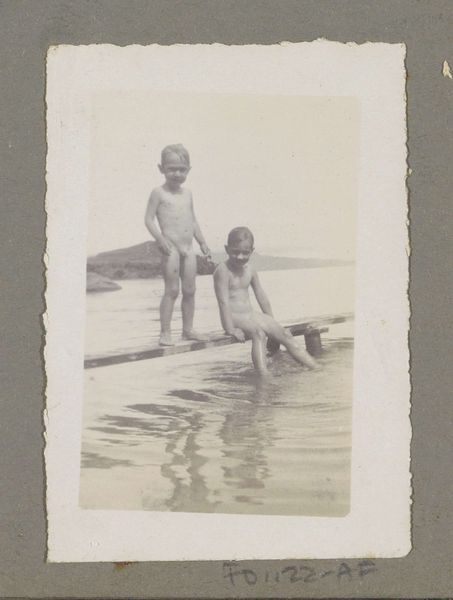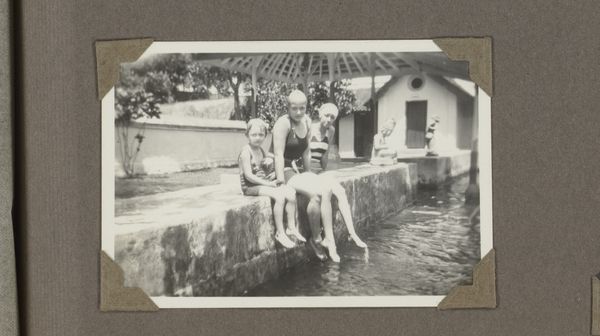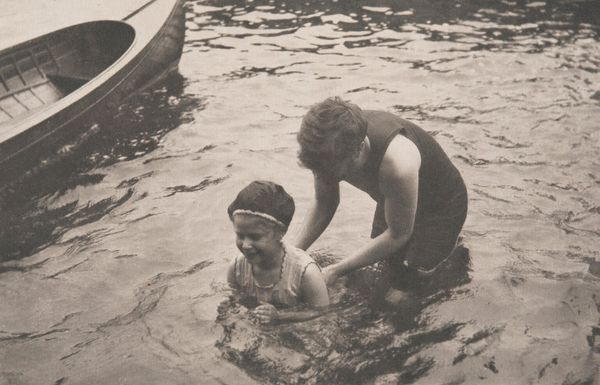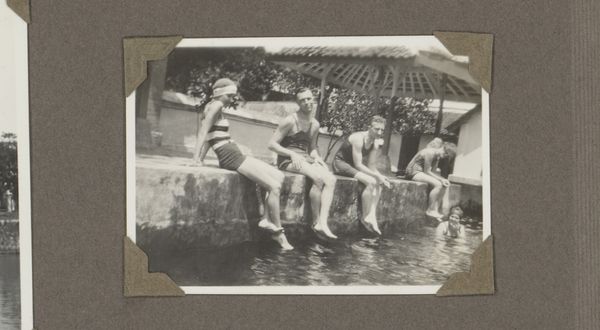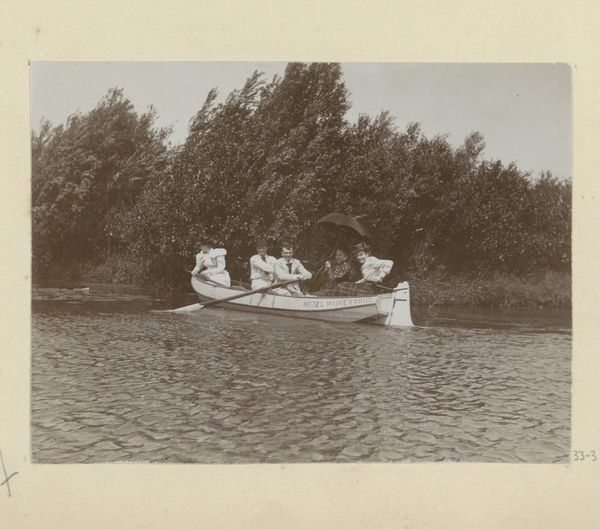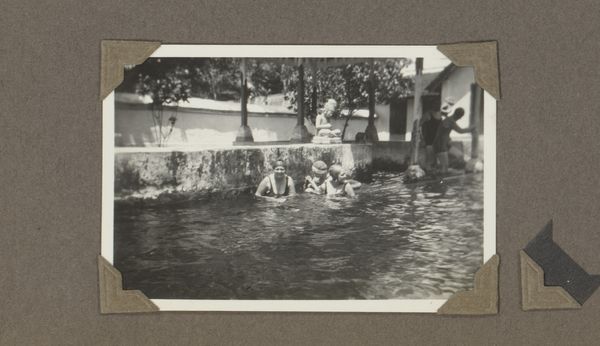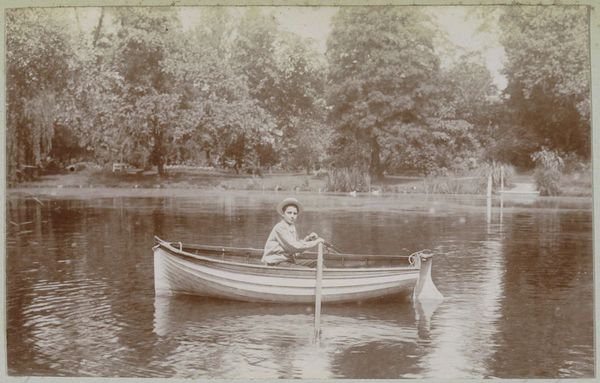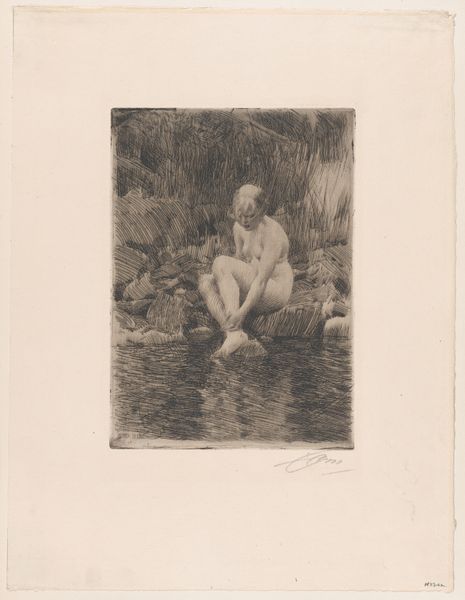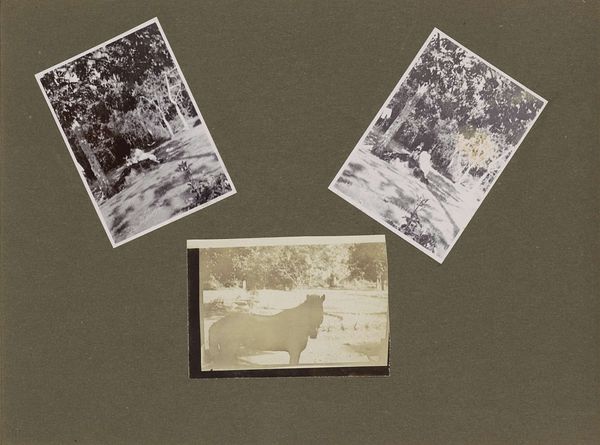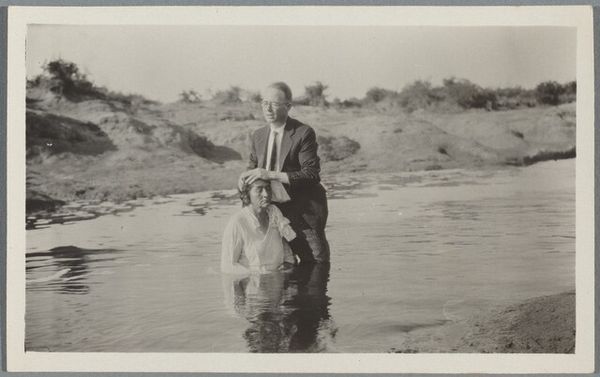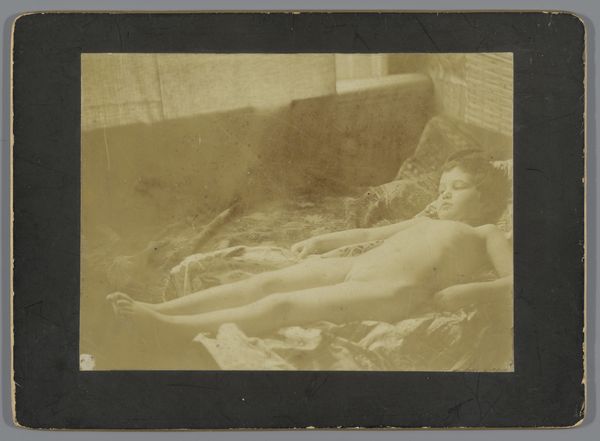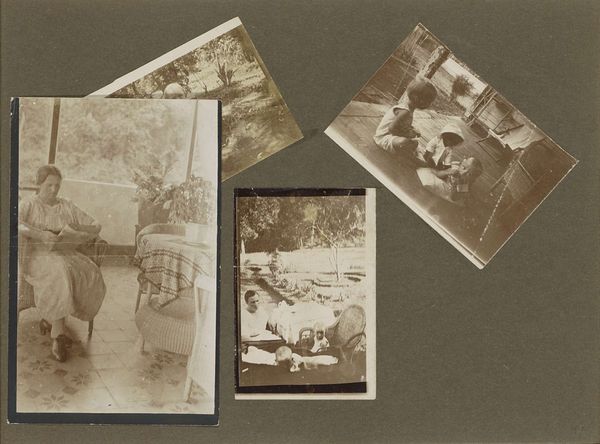
#
aged paper
#
toned paper
#
water colours
#
incomplete sketchy
#
personal sketchbook
#
child
#
fading type
#
coloured pencil
#
watercolour bleed
#
sketchbook art
#
watercolor
Dimensions: height 51 mm, width 78 mm
Copyright: Rijks Museum: Open Domain
Curator: Here we have "Hans Bergsma zwemmend op Sumatra," a work believed to have been created sometime between 1914 and 1926. It currently resides here at the Rijksmuseum. Editor: It has the breezy feel of a quick, fond snapshot – capturing a pure, almost defiant joy. The simplicity, the child's beaming face... it speaks volumes about a stolen moment of bliss. Curator: Indeed. Note the watercolor and coloured pencil on what appears to be toned paper, a choice that subtly evokes the patina of memory. The artist captures more than a likeness. Editor: It's as much about the atmosphere as the subject. You can almost feel the humidity, hear the water lapping. A carefree soul amidst a landscape undoubtedly more complicated than this single frame suggests. Curator: It's significant that the work resides within what is identified as a personal sketchbook. This immediately suggests a certain level of intimacy. A work not necessarily intended for public display but rather private reflection. Editor: Exactly. It invites you to consider the larger narrative hinted at in the incomplete, sketchy rendering – this is Sumatra through the lens of personal experience, right? Childhood innocence set against the backdrop of a colonial landscape. There is a dialogue at play. Curator: Absolutely. Consider the interplay between the detailed rendering of Hans's face, full of immediacy, versus the more suggested landscape behind him. The incomplete nature encourages active viewership. Editor: Right – and what initially strikes us as an endearing image of childhood takes on a bit of resonance when we acknowledge its historical and geographical setting. What sort of tensions or realities were kept outside the frame, in service of a sunny vision? Curator: This tension, that silent discourse you highlight, is a testament to the power of suggestion in art, and a tribute to memory itself. Editor: Precisely! It all just points to how a simple visual, handled deftly, can echo a thousand unspoken things. Thank you, Hans. Curator: Thank you, editor. A wonderful meditation on place, childhood, and the beautiful incompleteness of memory.
Comments
No comments
Be the first to comment and join the conversation on the ultimate creative platform.
